
Mike Holmes is one of HGTV Canada’s go-to contractors and the host of Holmes and Holmes and Holmes: Buy it Right.
I’m a big fan of building for the future, and a big part of that is building a home that is sustainable and energy-efficient. As the government, builders and homeowners start to incorporate sustainability into their planning, we’ll see energy efficiency options and technologies become more affordable, making “Net Zero Homes” much more attainable.
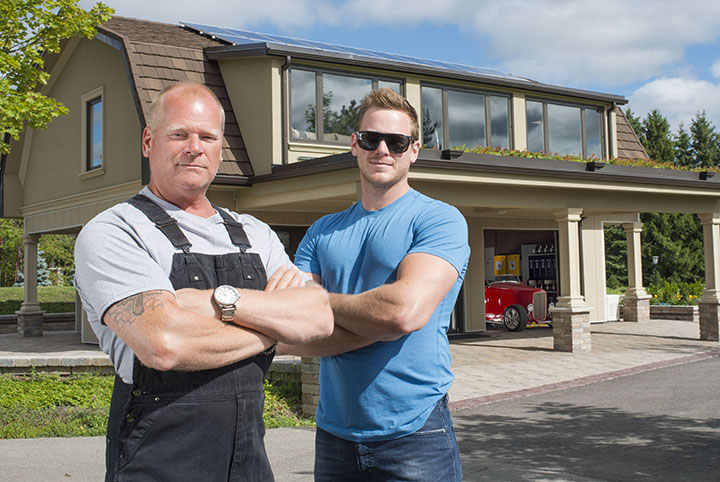
What is a Net Zero Home?
A Net Zero home produces its own energy locally and should aim to produce at least as much energy as it consumes. EnerGuide rates the energy performance of the home; the higher the rating, the more efficient the home). The lower the EnerGuide number the better energy performance of the home is. In order for a home to be completely Net Zero, it will most likely need to incorporate solar power or utilize some form of renewable energy source. Some areas offer energy buyback programs where, whatever energy you don’t use, can be sold back to the grid as a credit. Who wouldn’t like that?
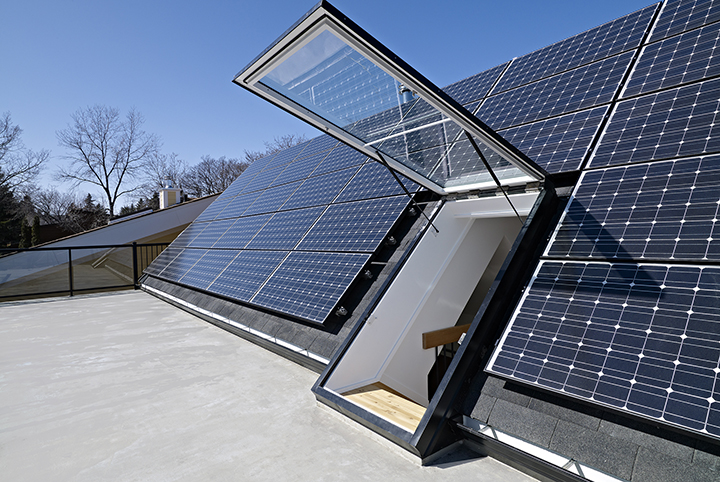
Your Building Envelope
With a Net Zero home, the building envelope must be highly efficient. Areas such as doors, windows, the attic, the foundation, and the exterior walls, must be properly sealed with a high R-value (a material’s ability to resist heat flow) and low air leakage through cracks & gaps. This ensures the home uses every unit of energy to its maximum potential.
When building a Net Zero home, one of the key considerations starts with the walls. Pre-fab wall systems can be insulated and structurally sound. The pre-fab walls we use, called “Timber Blocks”, are made in Quebec and use a liquid injected close cell insulating foam to create stability, virtually no air leakage and high R-values. These panels come with an interior and exterior finish from the factory floor for rapid and efficient installation It is systems like these that are revolutionizing how we think about building high-performance homes.
Your home’s foundation is another potential area for energy loss. Consider insulating the foundation below and outside the slab with expanded polystyrene (EPS) or another form of thermal break to stop the flow of cold into the home. In some areas, a “step building code” has been introduced to guide the building the industry, with predictable steps, toward a Net Zero home as a standard by 2030. This is a smart way to keep builders informed about what is coming and attaining what I have always said is an achievable goal.
Windows and doors are a huge source of energy loss. A poorly installed and/or insulated window is like having a giant hole in your home’s exterior. Double-paned windows were always recommended for energy efficiency, but now there are triple-paned windows. With multiple layers of glass, insulation can be placed in between the panes, boosting the R-value of the windows. The most common types of insulation are argon or krypton gas. Krypton is the better of the two but is also more expensive. But you get what you pay for, so if it’s in your budget, it’s a good investment. Argon-gas filled windows are a great choice if you’re looking for a cost-effective insulation for your windows.
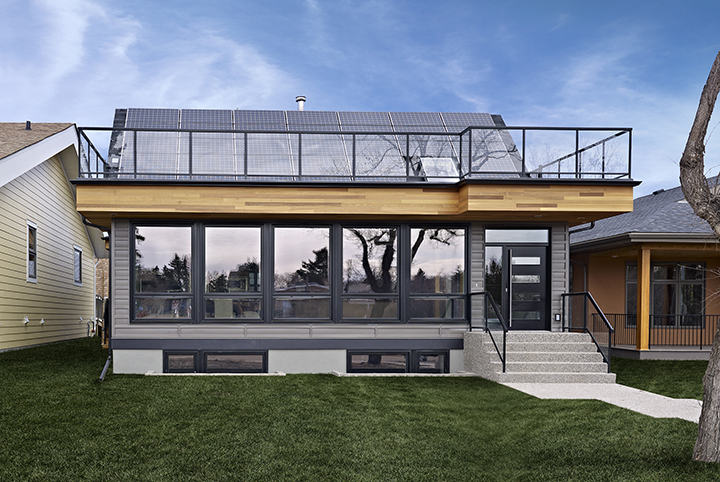
Geothermal Systems
For most homeowners in North America, the cost to heat or cool their homes accounts for more than 50 percent of their annual energy consumption. A geothermal system is an ideal heating and cooling system for a Net Zero home. The system uses the temperature of the ground to regulate the temperature in the house. In the winter, tubes filled with a liquid refrigerant absorb heat from the earth and bring it back up to heat the home. In the summer, the system operates in reverse, with the tubes absorbing heat from the home and transferring it to the earth, then bringing cool air back up to the home. A geothermal system can be a complicated and expensive retrofit on a home that’s already been built but is a great option if you’re building your Net Zero home from the ground up.
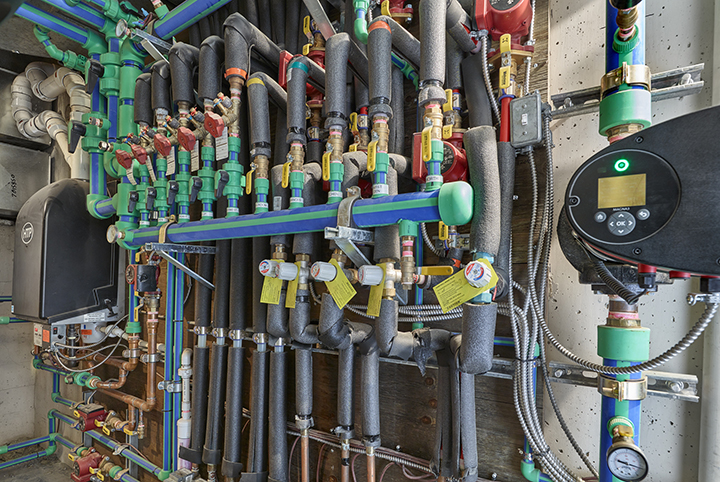
Battery Storage & Back up Systems
As mentioned, a Net Zero home is likely to utilize a renewable energy source such as solar or wind.; but neither of these sources can be relied upon completely on their own, so we need to integrate backup systems on battery or another fuel source like propane. There is some exciting progress on battery backup systems that could make it so we can disconnect from the grid – one day. I have been watching the Tesla M-Power Wall and others but for now, I use a propane backup system for places like my off the grid garage and other projects.
Ventilation
So your net zero home is airtight. But what about ventilation? You need to bring in fresh air and get rid of stale indoor air, or you’ll have condensation issues.
Heat-recovery ventilators (HRVs) are a great way for exchanging indoor air for outdoor air. An HRV is a mechanical ventilation unit that attaches to your home’s ducting. It captures heat in outbound air and reuses that energy to condition (heat or cool) inbound fresh air. It is also tied to exterior vents at two locations: an upper vent exhausts stale air, while a lower vent collects fresh air. Air flows through the HRV in both directions simultaneously and is drawn into the unit’s heat-exchange core. Although the inbound and outbound air supplies are always separated, approximately 70-to-80 percent of the heat energy in the outbound air is transferred to the inbound air, which means you’re using less energy to heat fresh air.
The HRV will reduce the humidity in your home, promote better airflow, and reduce energy costs. I see a lot of homeowners turning off their HRVs to save on electricity or reduce fan noise – don’t do that! It is like turning off your lungs and expecting nothing to go wrong.
There’s also an energy-recovery ventilator (ERV). The ERV is a more complex type of HRV that adds the capability of managing moisture in the air being drawn inside. That’s great news for Canadians since the cold winter air from the outside can be uncomfortably dry. In the summer, the ERV will work to remove humidity, keeping the air feeling cooler.
Both HRVs and ERVs work well with any type of heating system, including in-floor heating.
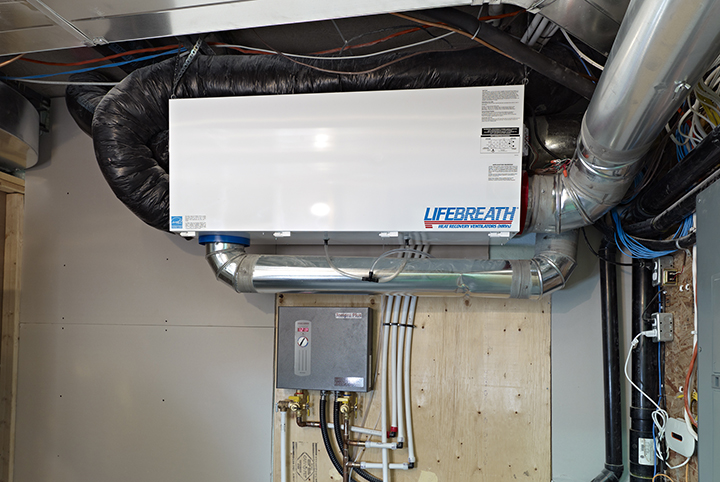
Building a Net Zero home requires an investment up front, but it’s an investment that will pay you back every month for as long as you live in it. It really is the future of housing.
Images courtesy of The Holmes Group, Effect Home Builders, and RDC Fine Homes.
HGTV your inbox.
By clicking "SIGN UP” you agree to receive emails from HGTV and accept Corus' Terms of Use and Corus' Privacy Policy.



